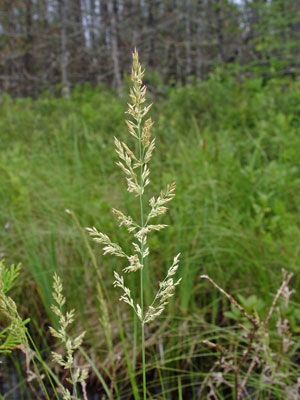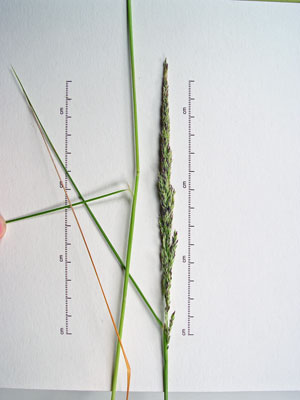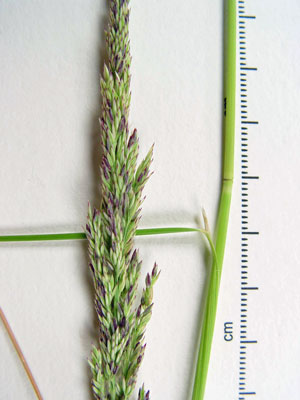DACF Home → Bureaus & Programs → Maine Natural Areas Program → Communities, Plants, and Animals → Rare Plants → Calamagrostis stricta ssp. inexpansa
Calamagrostis stricta (Timm) Koel. ssp. inexpansa (Gray) C.W. Greene

Northern Reed Grass
- State Rank: S1
- Global Rank: G5T5
- State Status: Endangered
Habitat: Damp woods and shaded cliffs. [Rocky coastal (non-forested, upland)]
Range: Local, eastern Maine to northern Vermont.

Aids to Identification: Identification of species of the genus Calamagrostis is usually difficult and dependent upon rather technical characters. They are all perennial grasses with long, narrow leaves, and 1-flowered spikelets with a tuft of hairs at the base of the lemma. This particular taxon is very similar to neglected reed-grass (C. stricta ssp. stricta). Both sub-species grow to 0.3-1 m in height, with condensed spike-like flower clusters, and spikelets 3-5 mm long. Subspecies inexpansa is characterized by very rough leaves; ligules 3-6 mm long with an erose apex.
Ecological characteristics: In Maine this species is known to occur on sparsely vegetated, rocky shorelines, as well as open ledges and outcrops in alpine settings.

Phenology: Fruits in mid-summer.
Family: Poaceae
Synonyms: Calamagrostis fernaldii Louis-Marie; Calamagrostis inexpansa Gray; Calamagrostis inexpansa Gray var. novae-angliae Stebbins; Calamagrostis lacustris (Kearney) Nash; Calamagrostis stricta (Timm) Koel. var. brevior Vasey; Deyeuxia neglecta (Ehrh.) Kunth var. americana in Macoun. Subspecies not delimited in Gleason and Cronquist (Second ed., 1991).
Known Distribution in Maine: This rare plant has been documented from a total of 5 town(s) in the following county(ies): Aroostook, Hancock, Piscataquis
Reason(s) for rarity:Range is naturally limited
Conservation considerations: Populations could be threatened by heavy recreational (hiking) use.